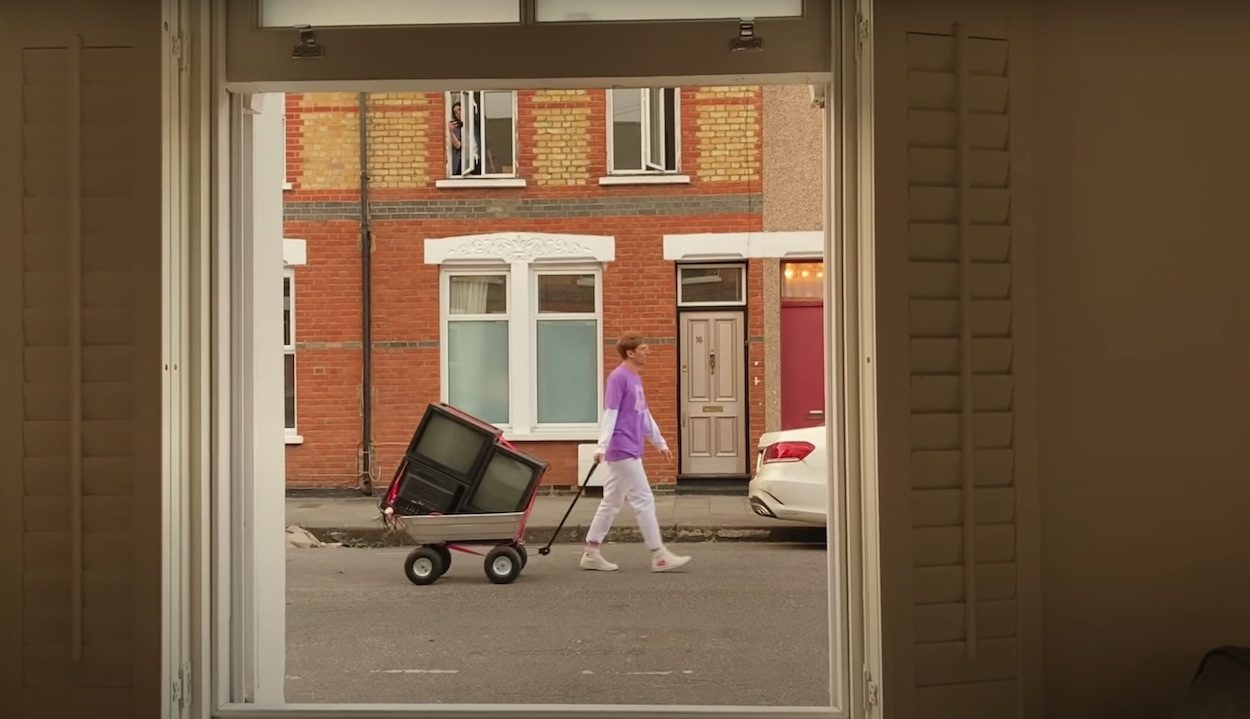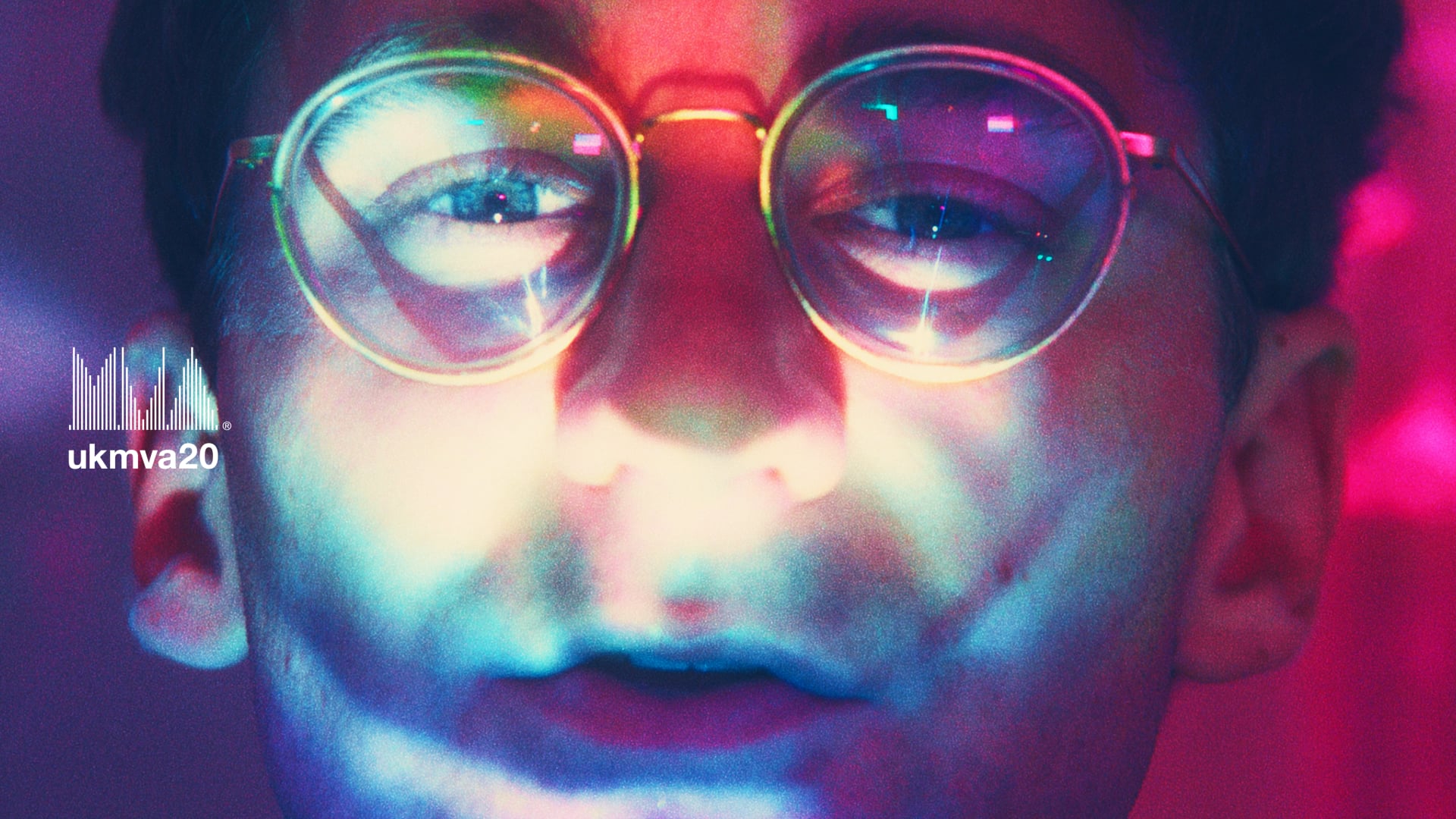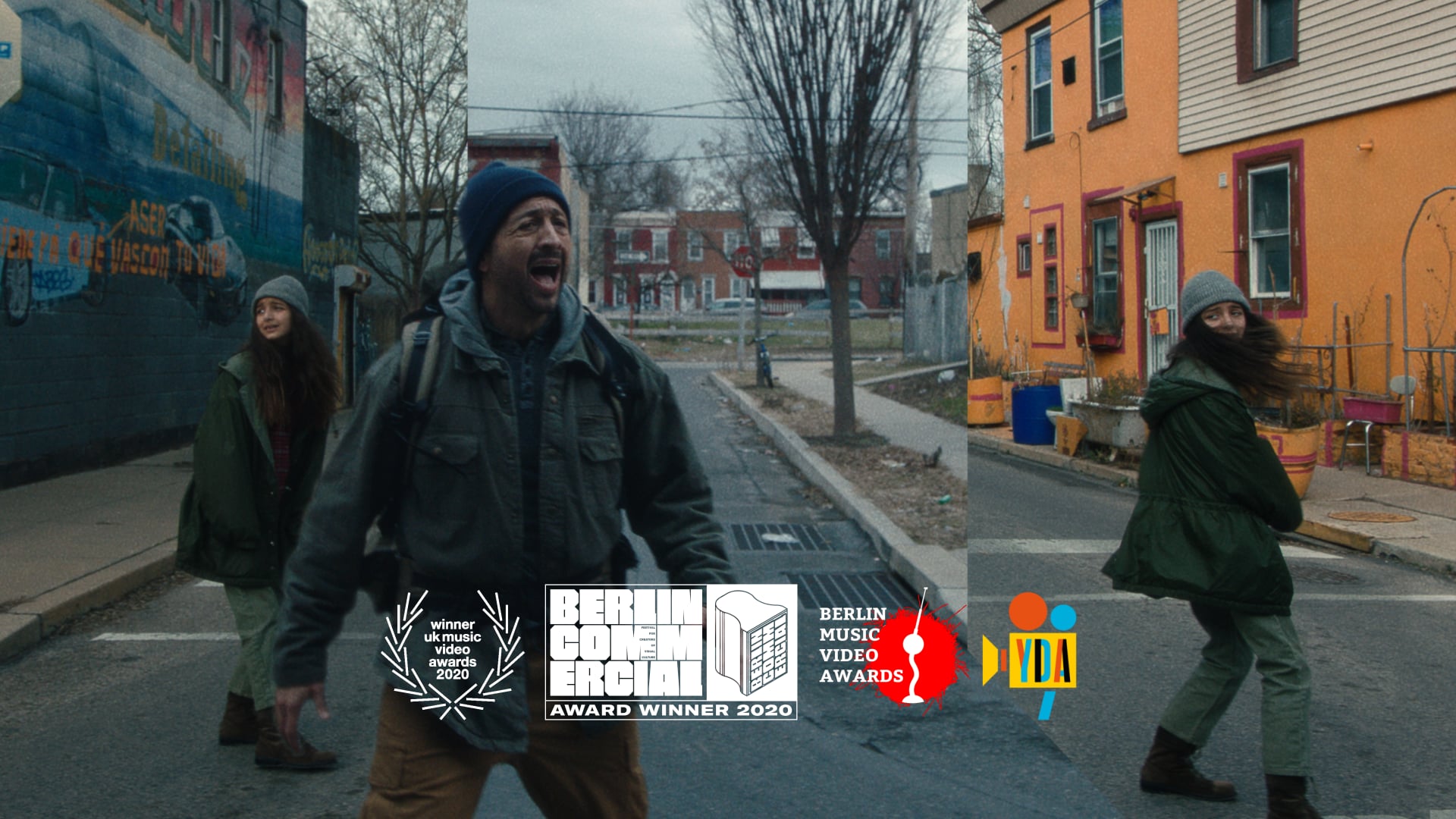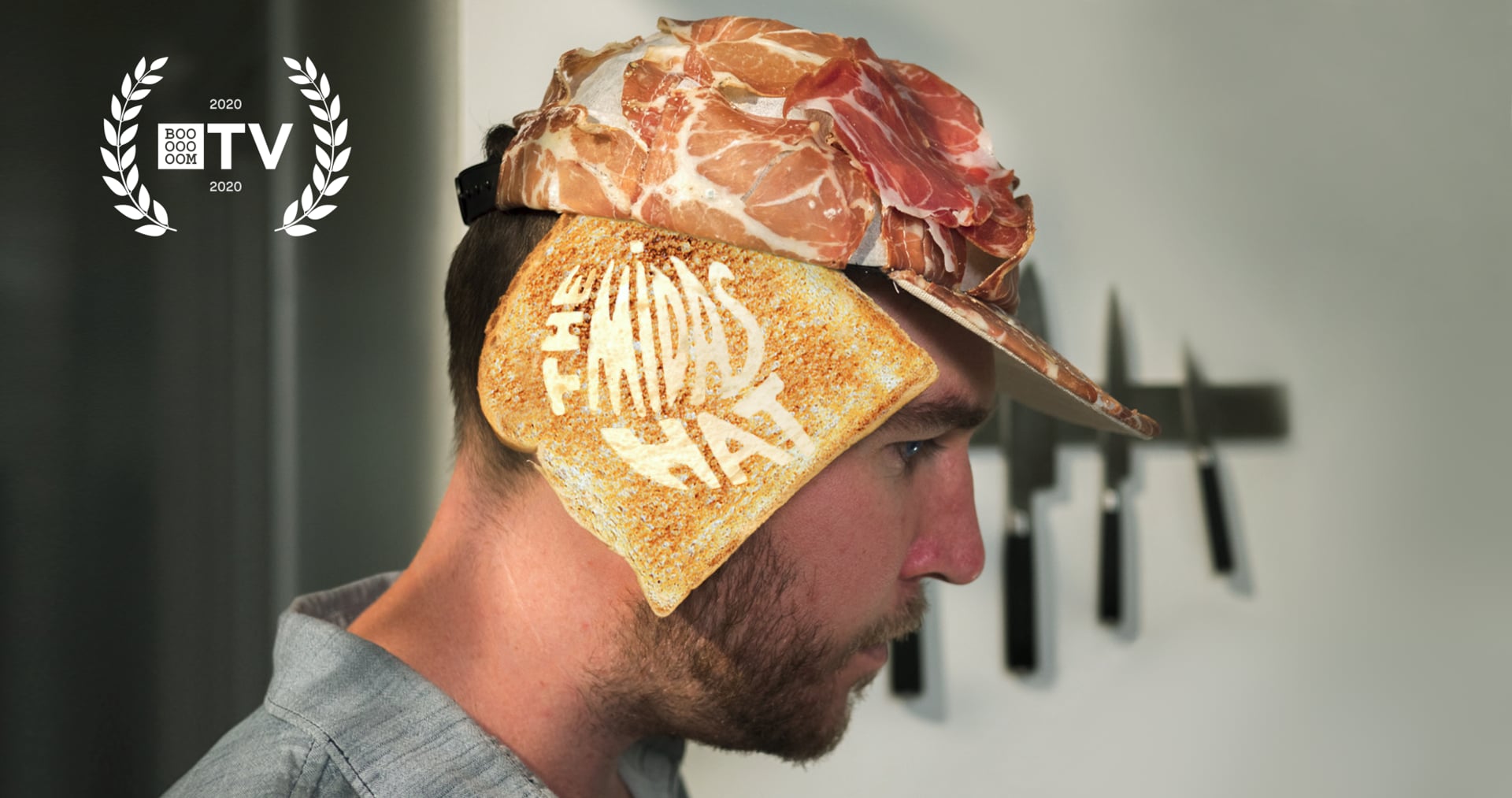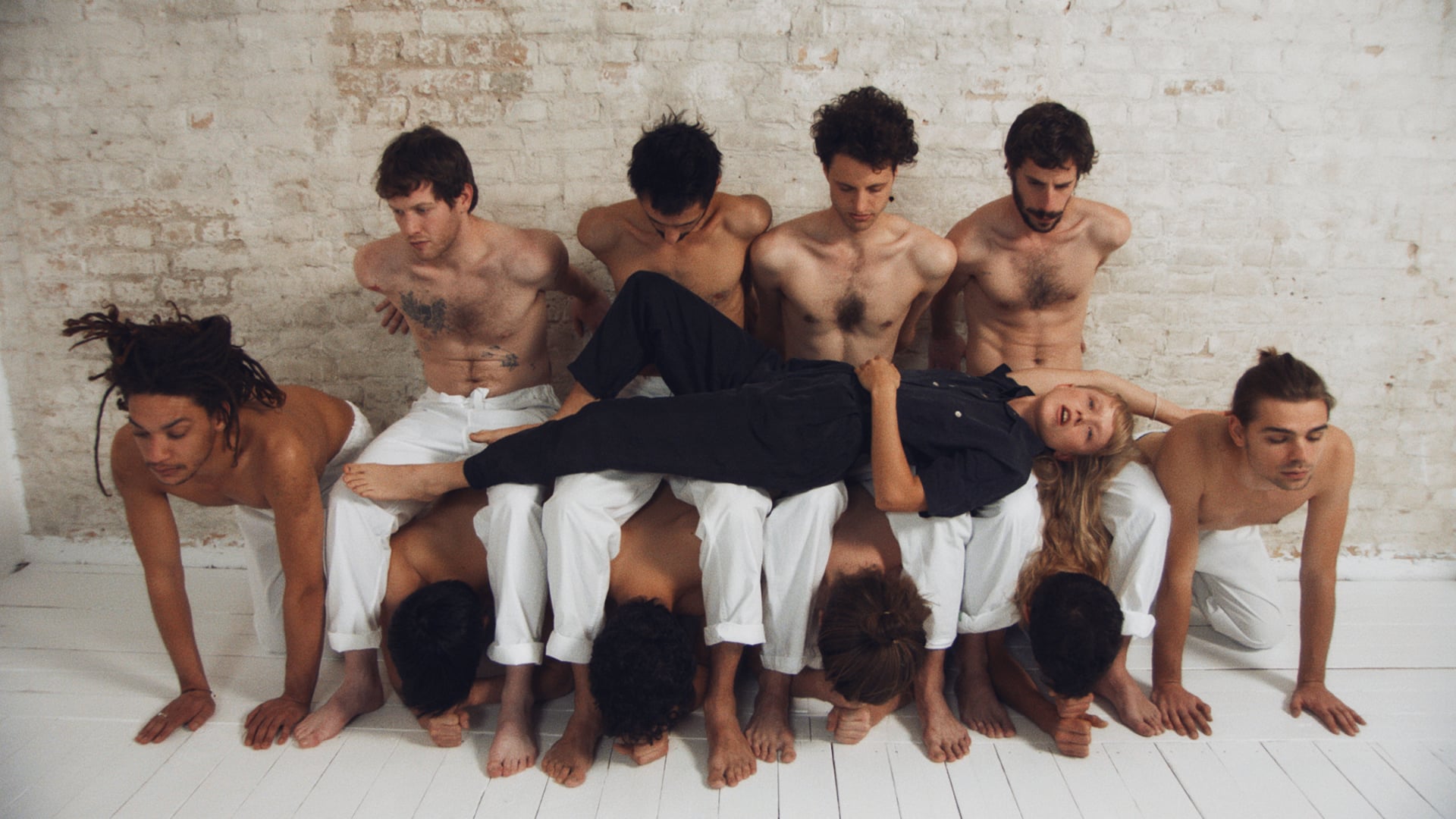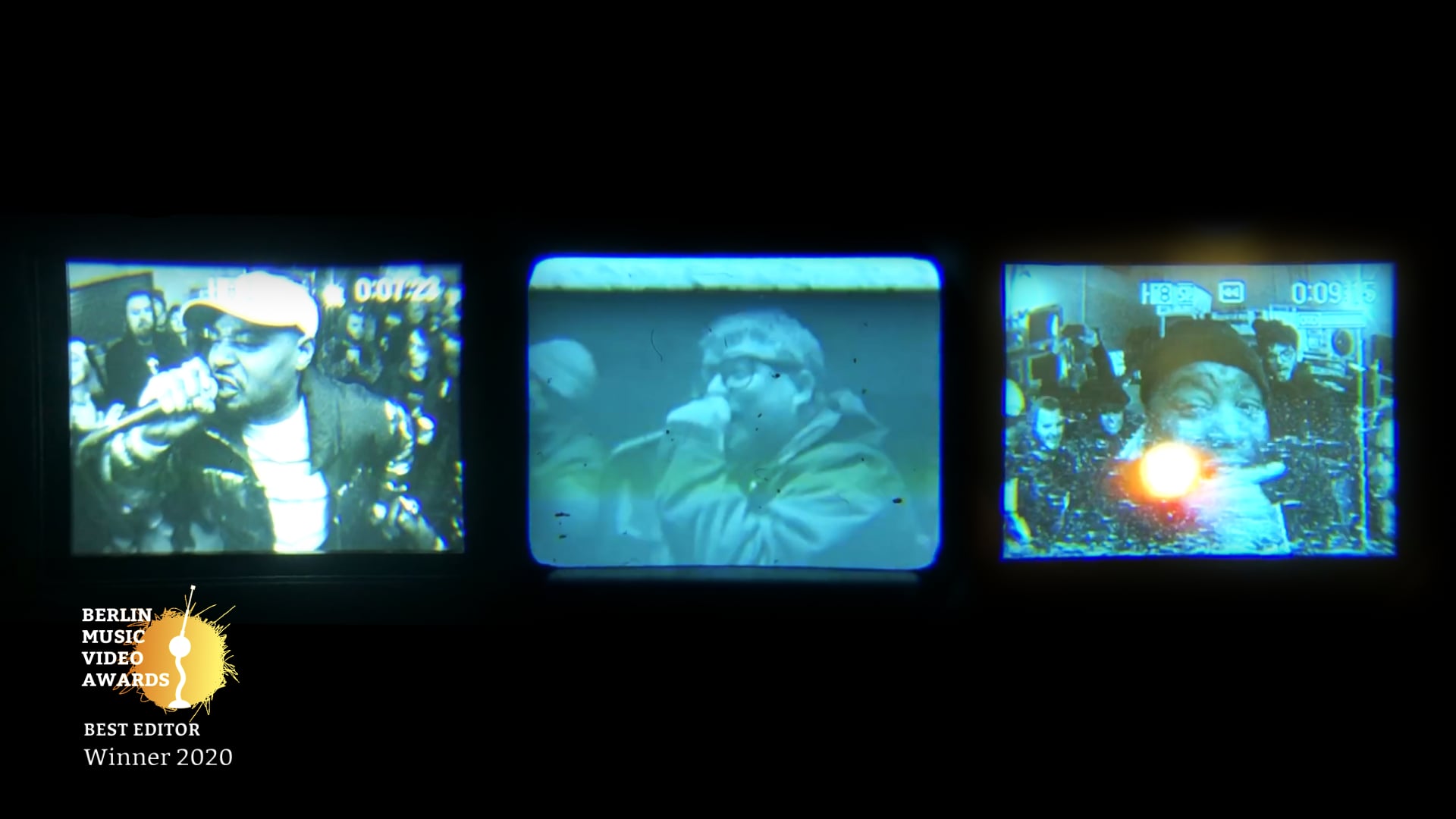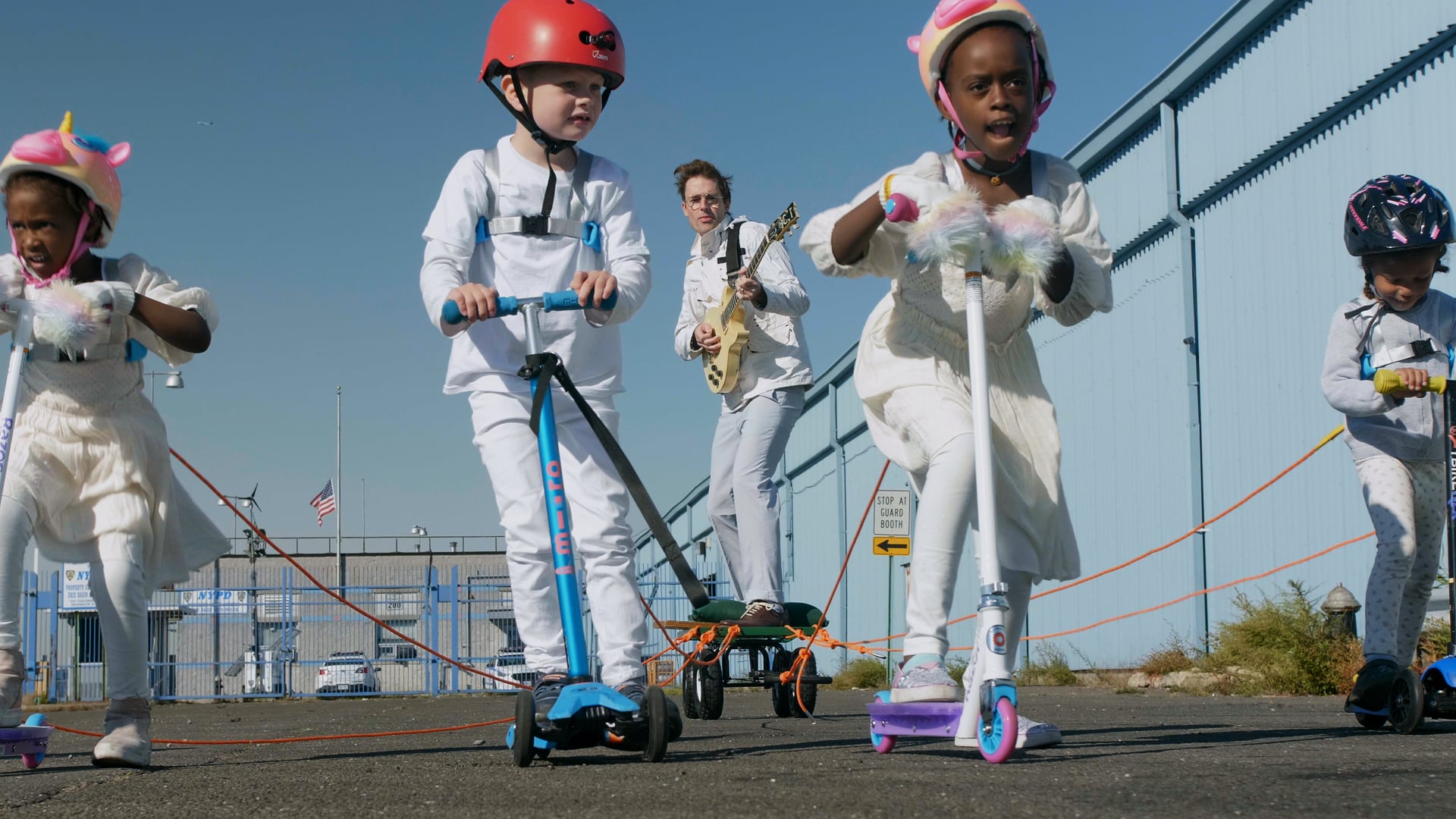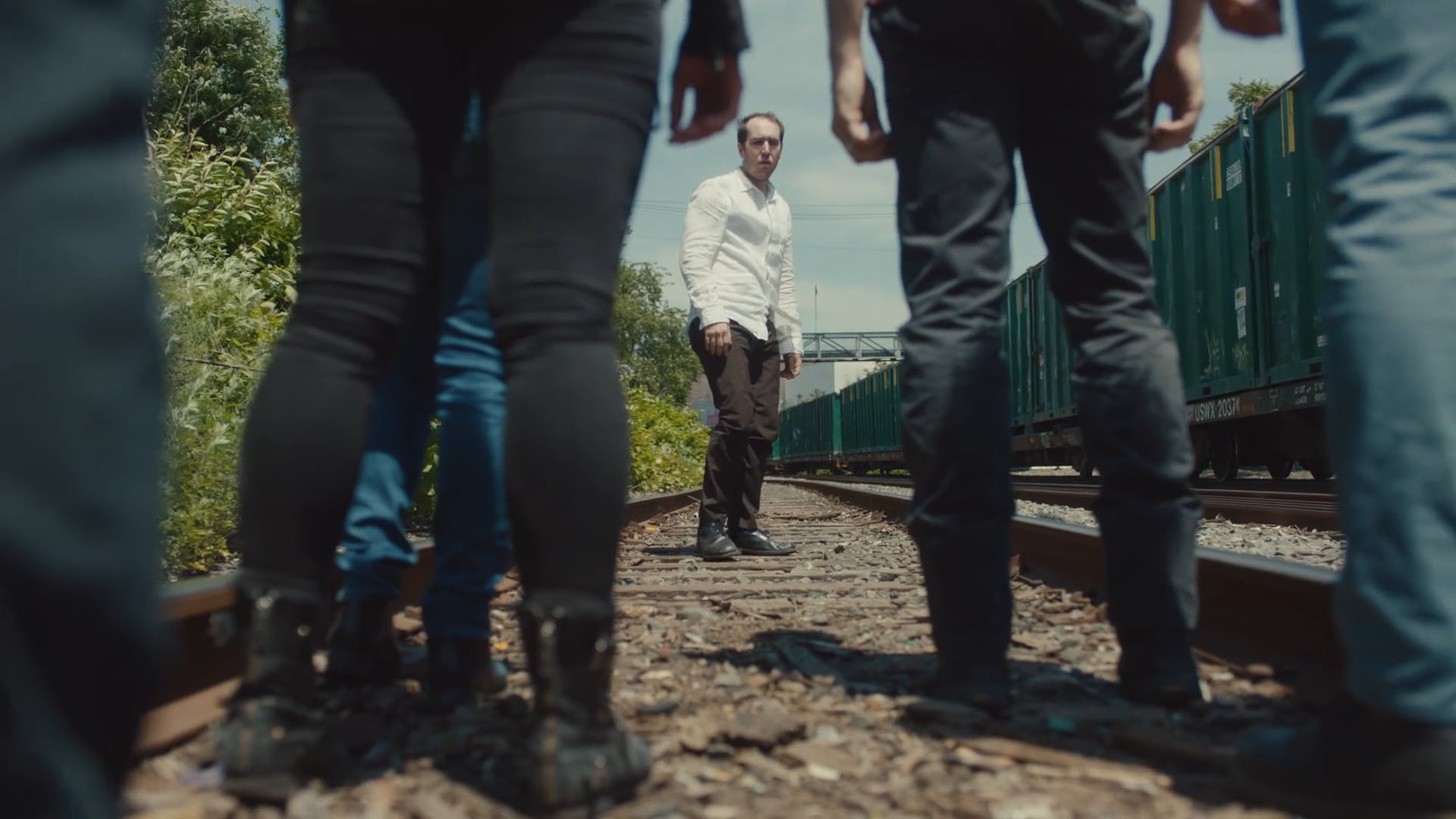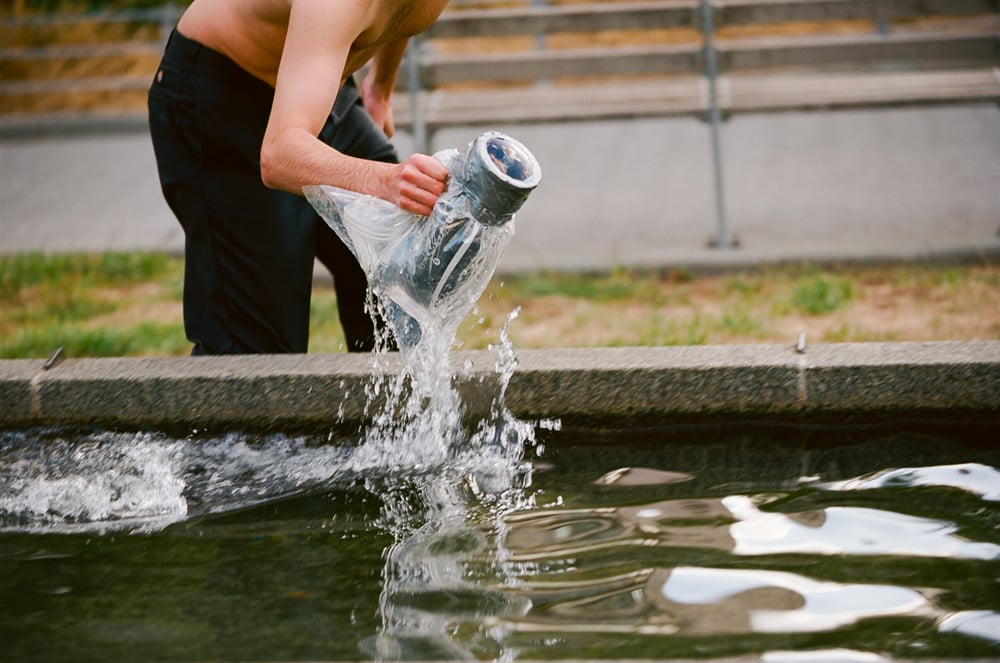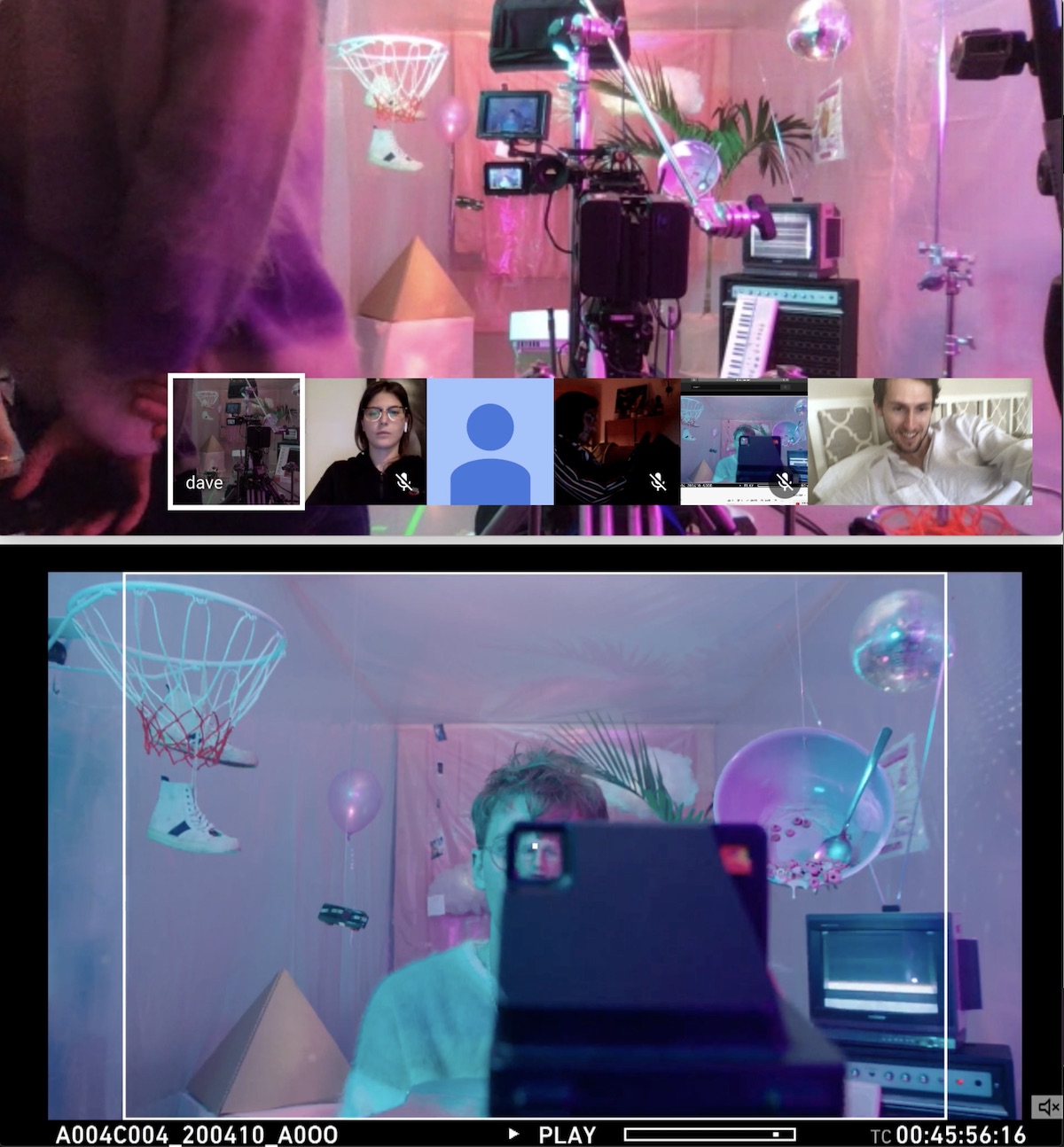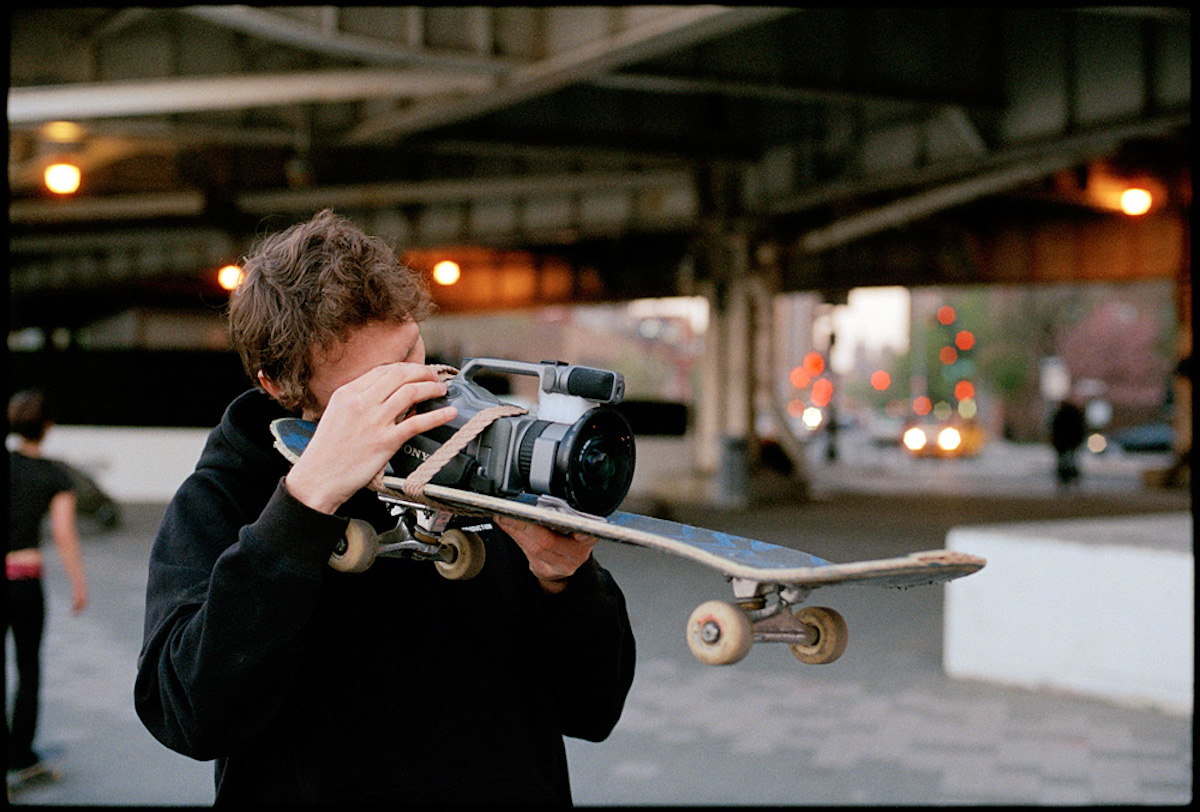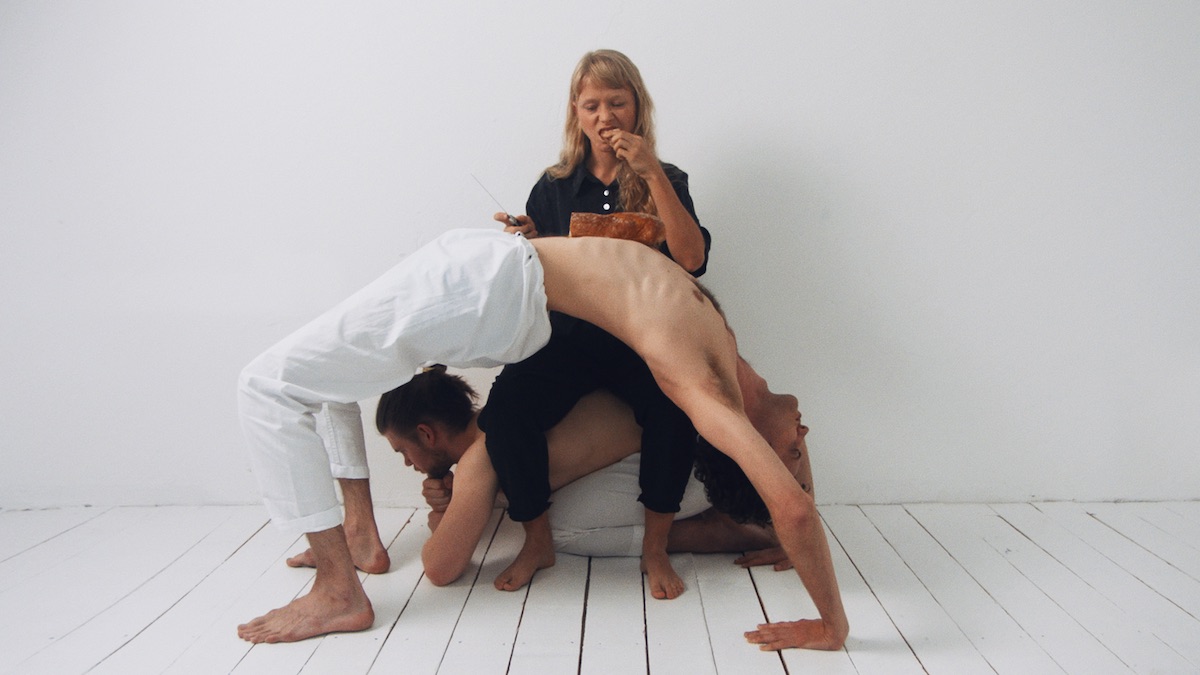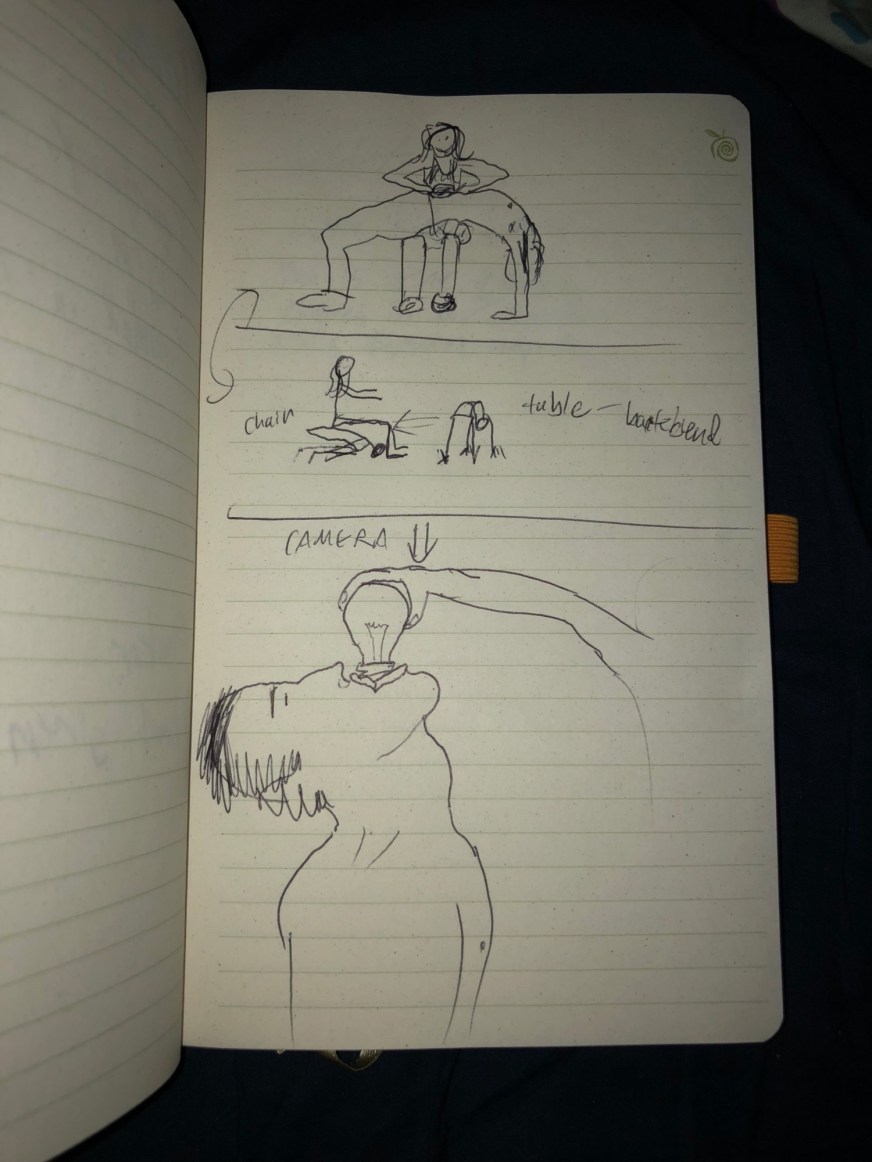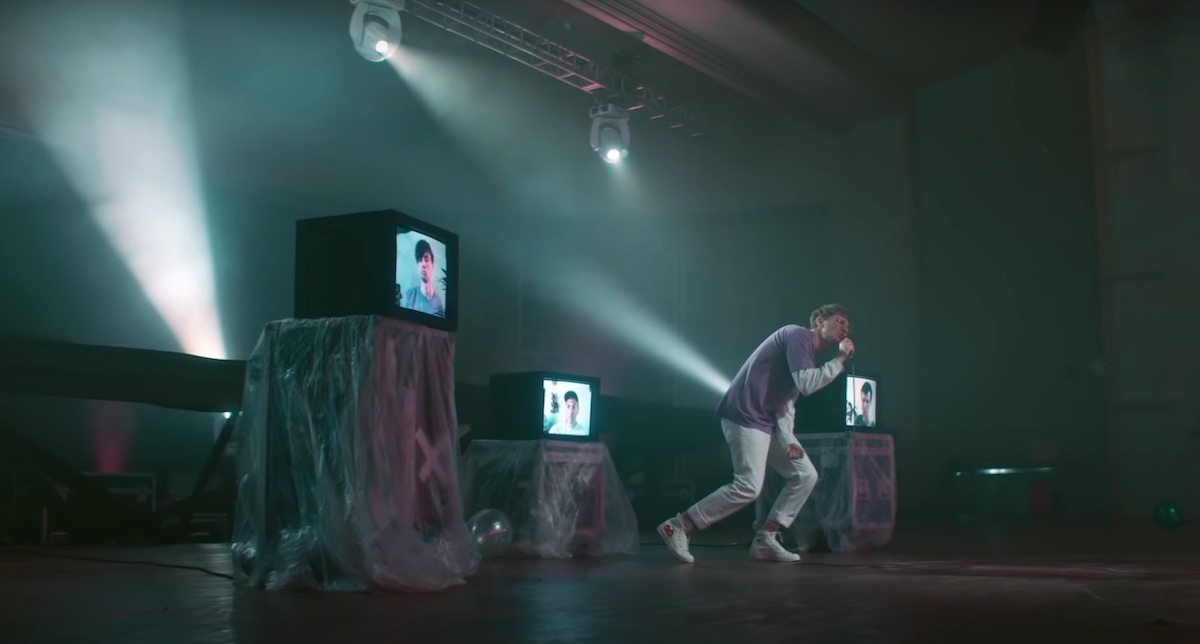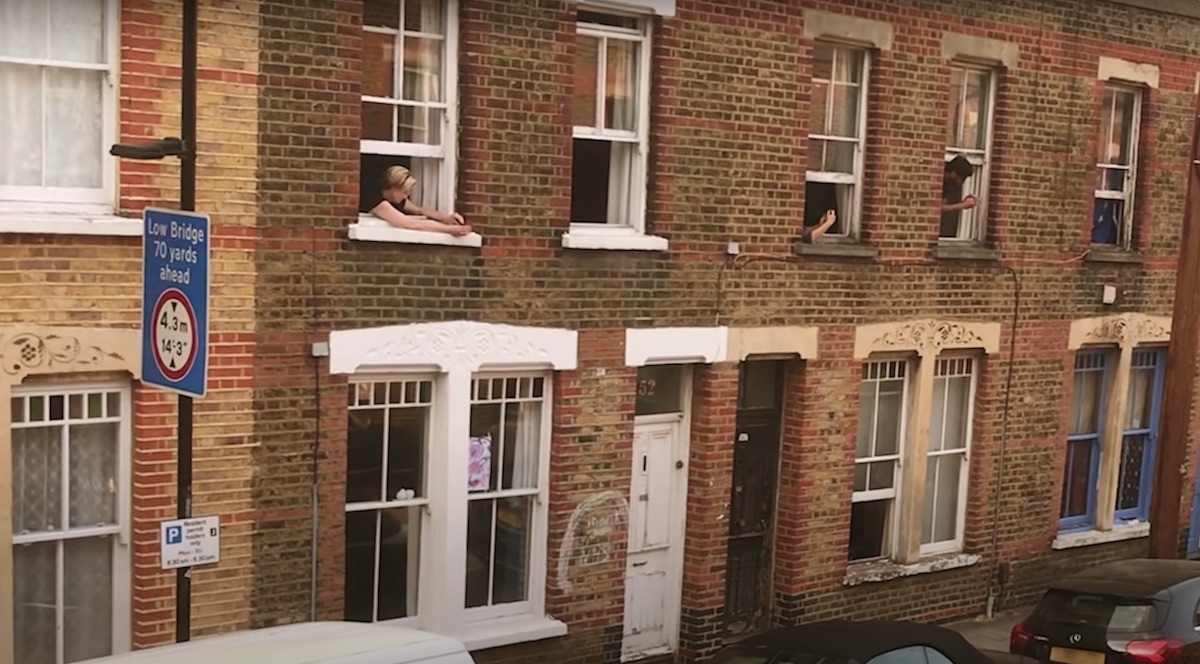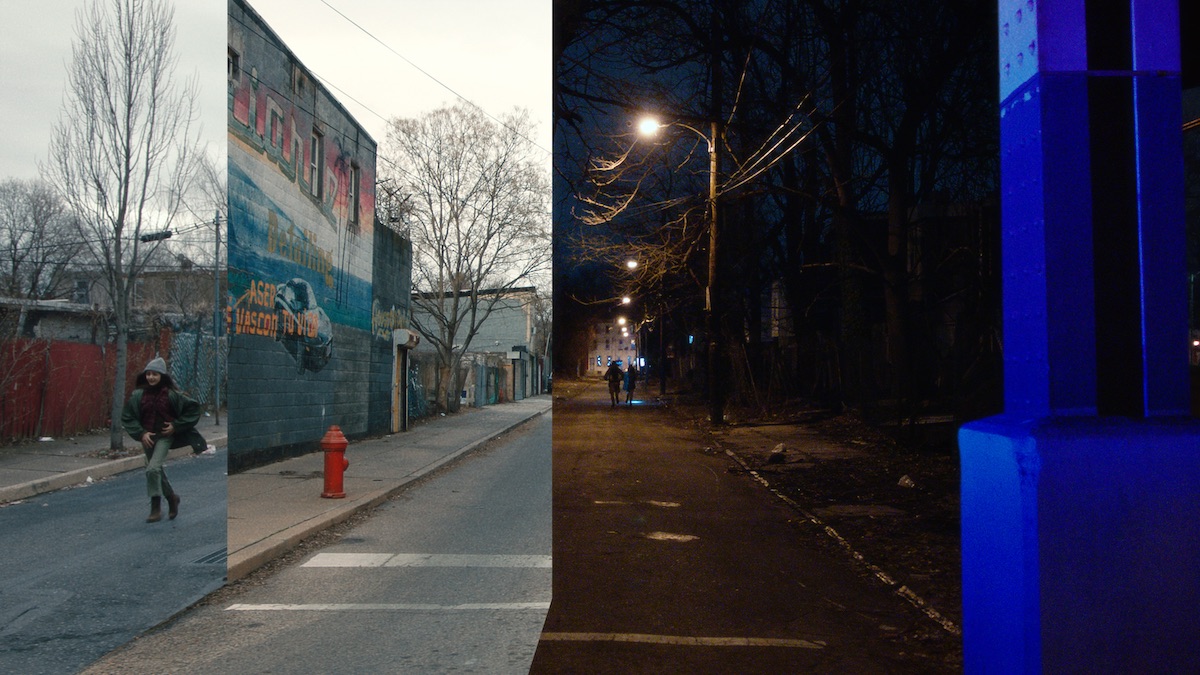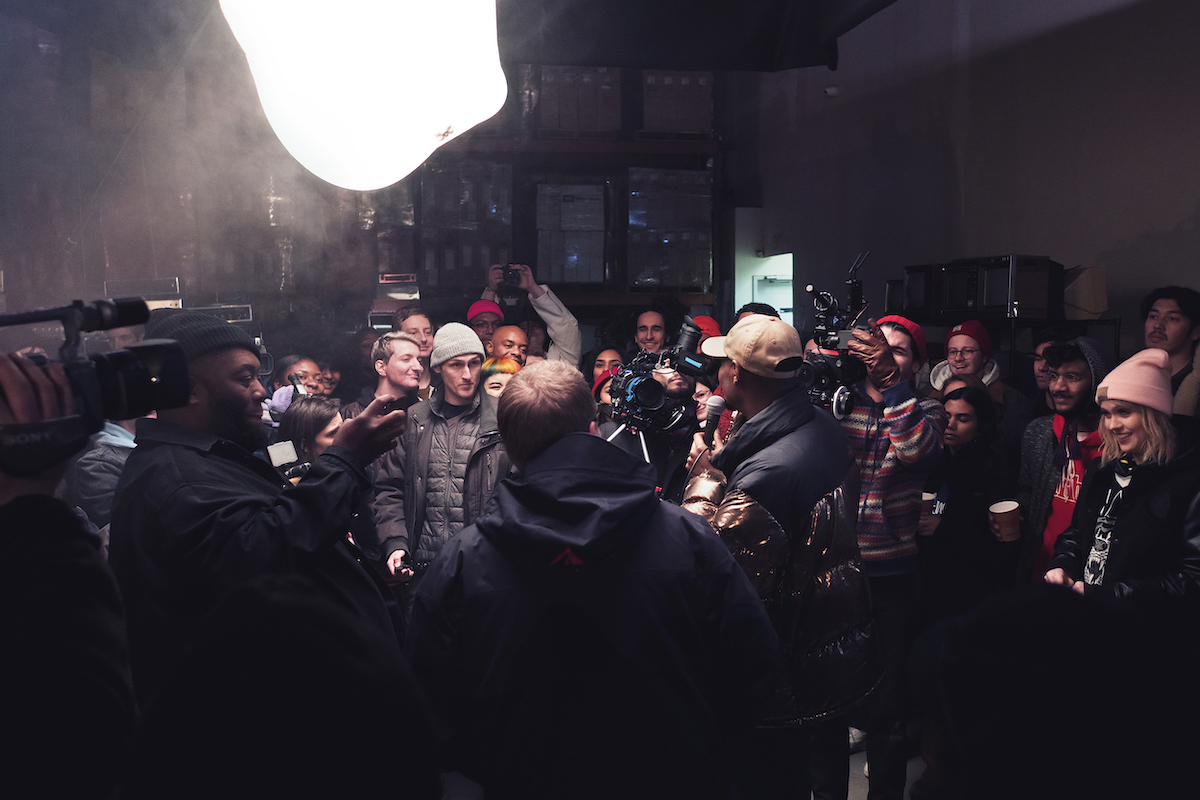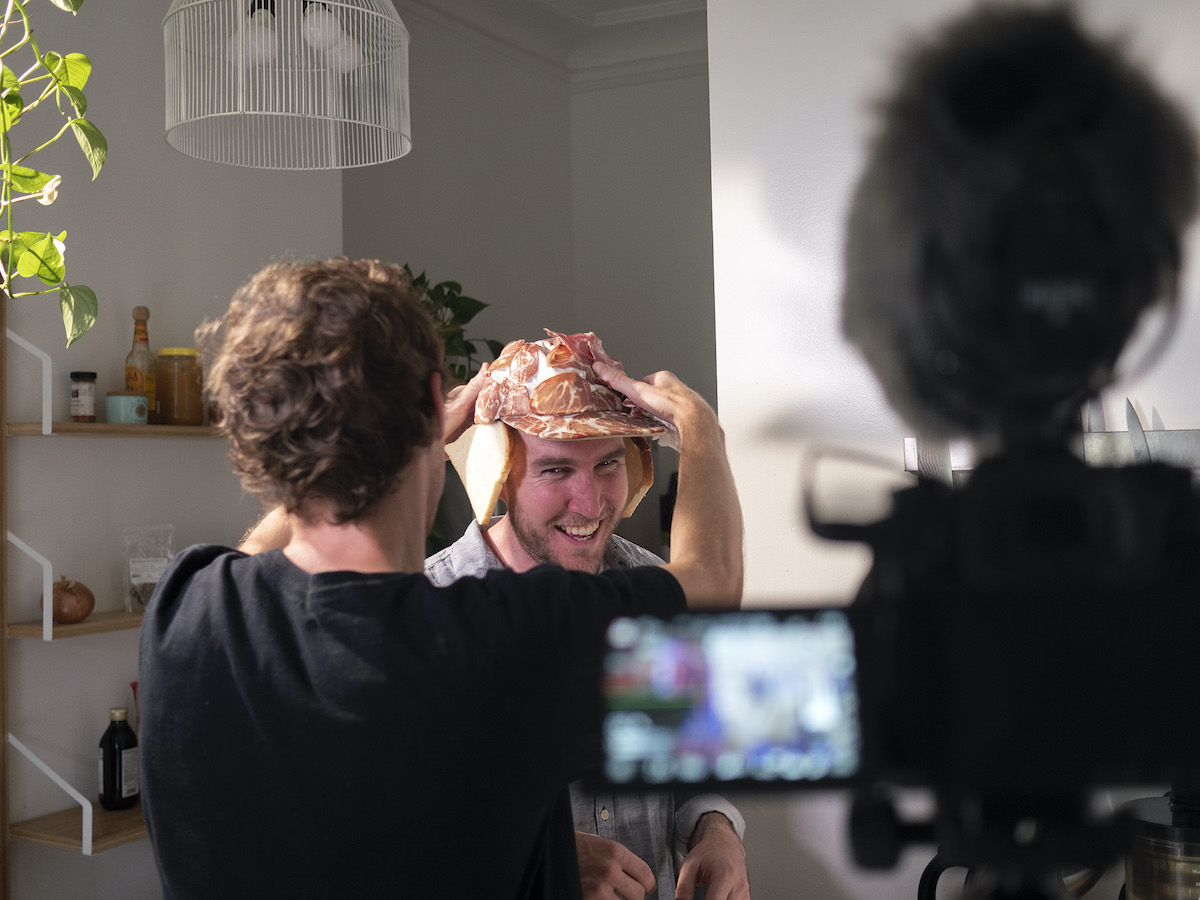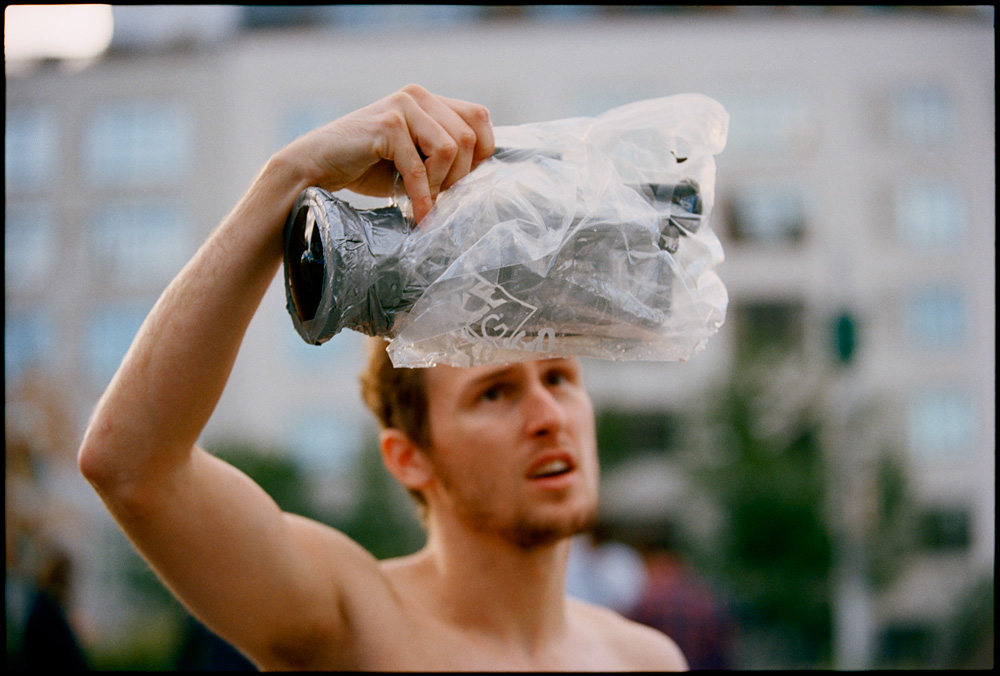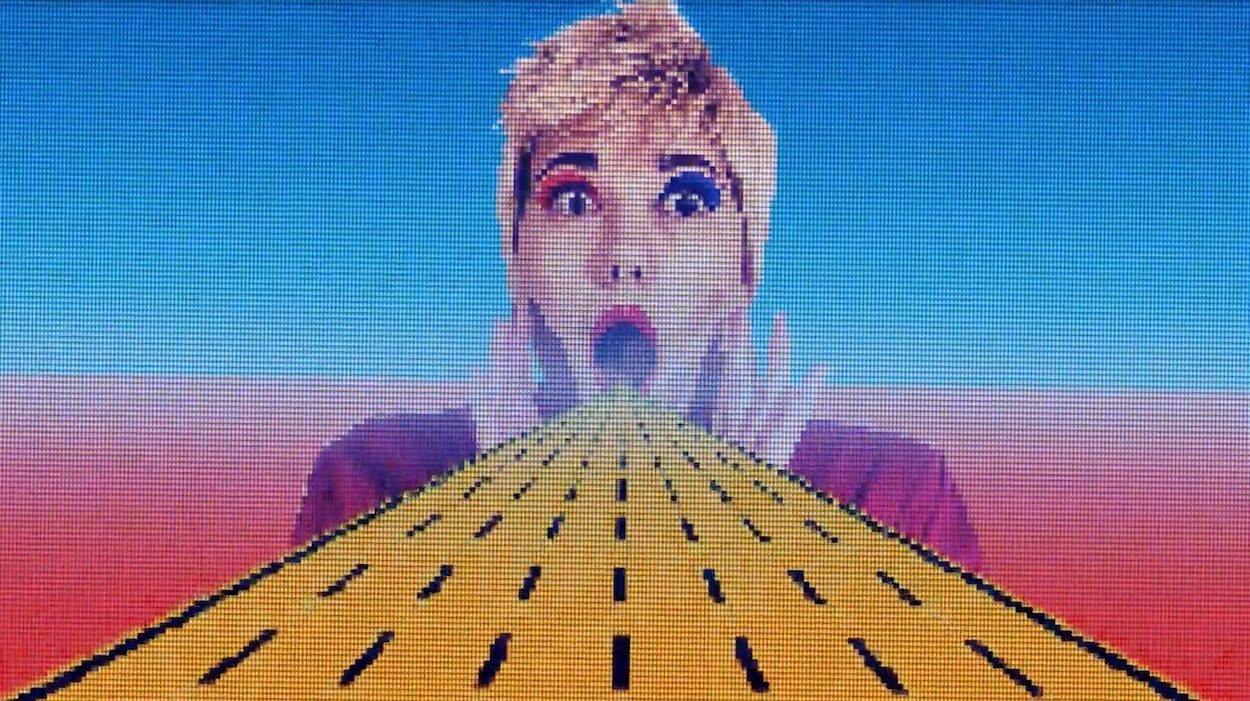Please tell us about your “usual” creative process – do you see the bigger picture and then build the process around that core idea?
Yes, I think I always find the “big” idea first, and then build the rest of the ideas around it, so it all serves the main concept.
Directing remotely for Glass Animals’ Dreamland
And what is your process of getting to that core idea – is it usually an instinctive flashbulb moment or more a labour of brainstorming and eliminating ideas. Do use pen and paper or do you think with the computer – how do arrive at creative clarity?
When I have a pitch to think up, I generally just listen to a track, or read a brief, a bunch of times; and then take a long walk. If my wife is around, I’ll rant at her with my rambling brainstorming until something comes out of my mouth that seems to stick.
But even when I don’t have an active project or pitch to work on, I usually jot down little notes through the day as they pop into my head, on whatever is at hand: the margins of crossword puzzles, the back of envelopes, a digital notepad on my computer or phone… From there, I’ll later compile them in my folder of vaguely sorted ideas on the computer, and try to flesh them out a little bit, even if it’s just into a full sentence. It’s in those moments of later development when I usually dig out the really exciting aspects of those little conceptual nuggets.
I find that these random ideas often find their way into my work, whether I apply them to briefs as they come in, or I develop or combine them into narrative concepts.
You’ve evolved your own distinctive film language using effects and techniques to enlarge your narratives on a visceral level rather than just whizz-bang eye candy. Did this aesthetic develop from your skateboarding films – Spirit Quest (https://spiritquest.vhx.tv) in particular introduces a hugely entertaining VFX narrative as a sub plot. How do you feel your style has evolved?
I actually try to keep my work pretty varied. After I do something once, I usually am ready to move onto something completely different. So maybe that evolution is just a quest to always keep trying new things.
My style definitely developed from making skate videos, when a lot of my decision-making was instinctual, and I might not have been able to articulate exactly why I had tendencies. One loose rule that I’ve always carried over is that any VFX should serve the core ideas, and not BE the core ideas. I’m always very conscious of the rhythm, flow, and transitional language of a piece, so my use of visual effects, whether practical or done in post, often centers around the transitional moments. Tricking the brain on those moments in-between.
Skin Crawl: Notebook treatment
And yet in Skin Crawl (which we were blown away by at the 1.4 awards) you don’t use VFX as a device but use human bodies to express the lyrics. Did you work with a choreographer or did you map out everything in mathematical detail before the shoot?
No choreographer, just me with a notepad, making terrible sketches of human anatomy. And then making my friends contort into shapes with me in my living room, testing out the shapes.
Glass Animals, Heat Waves
The level of prep you must do is certainly evident in your latest lockdown films for Glass Animals – we caught a glimpse of the instructions you detailed for Dave Bayley in this latest track Heat Waves as well as Dreamland. What were the main challenges of these productions?
Each video had its own set of very new challenges!
For Dreamland, we had to figure out how to break down the processes of set-building, rigging, camera prep, lighting… all for someone who had never been on set before, and to be possible for one person to do alone. We had to whittle down each element of production into the most streamlined, light-weight version possible, while still striving to keep their end results high-quality.
And then we had to write the instructions! Working with art director Bon Walsh and DP Ruben Woodin Dechamps, we broke down all those steps into simple, bulleted instructions. Everything from how to set up dolly track, to how to rig the set’s walls, was laid out in “Explain Like I’m Five”-level steps. It was hard to distance ourselves from the common knowledge base that we all have in the production world, and lay things out in a way that a total outsider could follow.
It’s all in the detail
For Heatwave, rather than putting all the groundwork onto Dave, it was more of a neighborhood effort—literally! We wrangled the denizens of the entire street, and enlisted them to be our camera operators. This time, I wrote guidelines for each of them, for how I wanted them to film out of their windows on each take. Of course, a lot of that went out the “window” once they were actually filming, but in the end it was that uncontrollable element that led to a lot of the little magic moments.
I’d already learned that lesson on the Danny Brown video, where we handed a ton of old camcorders to the crowd and let them film themselves. I shepherded them along, giving notes on how to shoot each time we reset, but ultimately I had to trust that they’d find some unpredictable magic in their unique angles. And that’s exactly what happened.
Socially distanced filming for Heat Waves
Nice touch with the double-decker going pass with Glass Animals billboard. Blink and you’d miss it. How did you direct Dave Bayley remotely – was there a fear that you’d come to the edit and wouldn’t have the footage?
Well, given that I had an entire street’s worth of cameras pointed at him—I wasn’t worried about coverage this time around!!
I was in the USA, while the shoot happened in London. So I directed Dave, and the crew, via the wonders of wifi. I had a livestream of the Alexa rolling on my laptop, and was on a constant phone chat with DP Sam Meyers via an earbud in one of his ears. Simultaneously, I was on a continuous FaceTime video chat with either the producer Erin Sayder or the 1st AD Chris Malin, who were giving me a wide view with their phone cameras, and who relayed my instructions to the rest of the crew. It actually went really smoothly, and the crew did an amazing job. The production went off without a hitch, while remaining socially distanced and safe.
Just as the Dreamland video captured a very specific moment in time—the initially fully quarantined days of the Covid lockdown—I think that the Heatwave video similarly captures the feeling of a moment. It’s also a statement about the music industry at large, for the foreseeable future—how artists are walled off from their audiences, and the future of live shows is uncertain. I’m glad we got to, at least for a day, bring a live performance out to some fans, albeit through their windows…
Motion tracking for the walls captured from a van moving at idle speed
Your video Walls for Australian artist Mild Minds (aka Benjamin David) which deals with migration, displacement and family separation features a father and daughter (played by real father and daughter actors Alberto and Ana) trying to survive on city streets. This is a brilliant example of how you can construct such an emotionally charged fusion of special effects and narrative. Please tell us about the process of creating the digital walls?
This was a meaningful project for me, as migration, fear, and risk of deportation has been a large element in my own family.
There was a “right” way to make this visual effect: motion control, on rails. However, we had neither the budget nor time for either, so I had to get creative. I ended up figuring out a low-budget way that got us close enough for me to even out the rest in post: a camera ratcheted to a van, moving on idle speed! The idle speed of the engine gave us consistent results, and a simple vibration and shake-dampening technique by DP Andrew Maso let us capture smooth, easily replicable results that let me stitch the frames together the way I needed. The rest was just grunt work in After Effects, with motion tracking and manually repositioning to make up for when things weren’t quite perfect.
BTS, Danny Brown with Run For the Jewels
All your films have a humane element to them, for instance Radiohead’s Man of War really gets under the skin of their lyrics and your video for Danny Brown and Run the Jewels could have been a sterile performance piece in a warehouse but it’s warm and wonderful. What are you consciously looking for when you write your treatments?
I just think that there always needs to be a strong concept. Sometimes, music videos are used as a way to create beautiful visuals, but there doesn’t seem to be much of an idea holding them up. For me, it’s more important to chase a unique concept. Beauty without intention is superficial, and ultimately I think unmemorable.
Rind over matter: making Midas Hats
How did you arrive at the idea for Midas Hat. It’s on replay, all the time for laughs.
My good friend Brian Downey hand-makes hats under his brand, Falcon Bowse. Every once in a while, he has a fun art project centered around hats; a few years ago, he made hats solely from textile scraps cut from things out on the streets of NYC. I’d made a little video with him for that project, and it had been a lot of fun.
Last fall, Brian showed me what he was working on then: turning everything into hats. He had an entire wall already filled with hats made out of solo cups, pickle skins, pincushions, light sockets, dollar bills… They were just so insane and hilarious that I couldn’t wait to make some sort of film featuring them.
I thought up the “Midas Touch” idea—which felt pretty obvious to me, as Brian really was this maniac whose possessions were slowly all being transformed into hats—then grabbed a few friends who were free one weekend. We shot it in and around Brian’s apartment with the tiny amount of equipment I had on hand.
VX water shoot
Where have you been based during the pandemic? What have you learnt about yourself during this period?
I’ve been in Florida. I was actually down here in pre-production for my first narrative feature, already in the production house, gearing up the shoot…when it got cancelled, much like every other production. Since NYC got locked down, I’ve stayed on here since, working on remote projects, and writing.
I’ve learned that I physically need to be working on films, or I start losing my mind.
What would you like to create that you haven’t?
Narrative! Before I had anything to do with film, my original passion was narrative fiction. I have a MFA in fiction writing, and I want to put those muscles to use on screen. Fingers crossed that we’ll be able to get the film I was prepping for back on track; but otherwise, I’ve been working on other concepts as well.
I would also love to try out some of my “larger” short-form visual ideas, whether in commercials or music videos. Like I said, I have my endless notebook of concepts—some of them just have budgetary needs I haven’t been able to hit yet!
Is there anything else you’d like to share?
Although my journey into directing has been a tough and sometimes lonely one, with a lot of false starts and having to claw my way into work from nothing, I’m very conscious that as a straight white male I’ve still had a lot of benefits that others haven’t enjoyed. So I think it’s important to keep this in mind as the world of production moves forward, and help elevate voices and talents that are still under-represented within every department.
Colin Read is represented by Pulse Films
